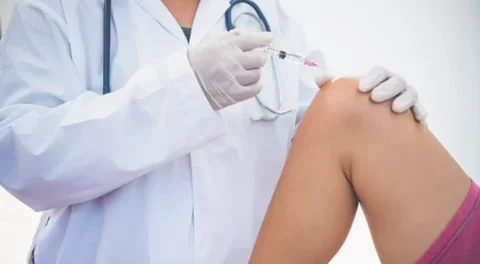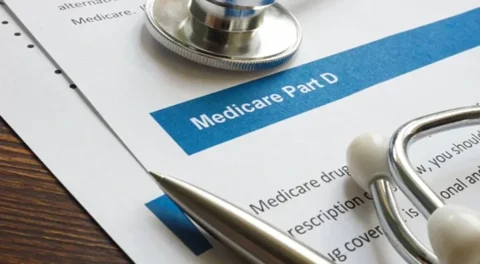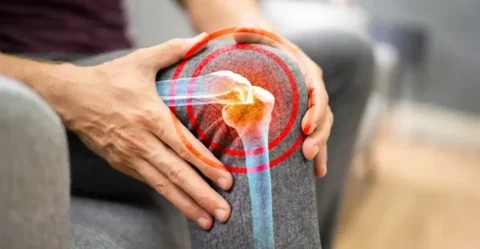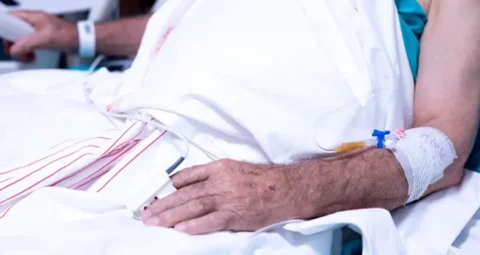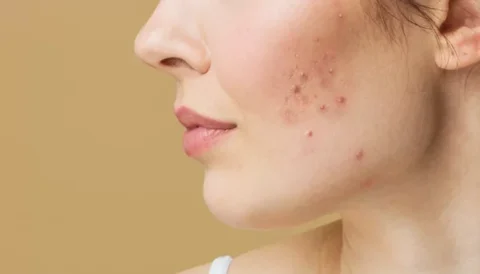Advancements in hair follicle tissue engineering have revolutionized treatment for alopecia. Different hair growth promoters are being introduced that bring improvements to the previous modalities already in use. These new technologies that have applications in dermatology include the addition of dalteparin and protamine microparticles (D/P MPs) to PRP.
So does the addition of D/P MPs to PRP result in better hair growth? Yes, because it significantly improved the hair thickness of the participants of the study when compared to the use of PRP alone.
How The Enhanced Effects Of PRP-Containing Dalteparin And Protamine Microparticles Were Determined
Dalteparin and protamine microparticle is a new carrier on hair growth that, when added, were shown to improve the clinical efficacy of platelet-rich plasma injection due to their capacity to bind to numerous growth factors. This conclusion was drawn through the observation that the increase of hair number was more substantial in PRP used together with D/P MPs.
The following show the steps of the methods of the Takikawa, et al. (2011)’s study that recruited 26 participants (16 men, 10 women), 28 to 59 years old with thinning hair volume:
1) Preparation Of D/P MPs
To prepare dalteparin and protamine microparticles, 0.3 mL of protamine was added to 0.7 mL dalteparin and mixed together via hard vortexing. This created 1 mL of D/P MP solution containing the said components in 3:7 protamine-dalteparin ratio, which was then subjected to washing using phosphate-buffered saline to maximize the harvesting of D/P MPs. Approximately 6 mg dry D/P MPs were then harvested from the 1 mL D/P MP solution.
2) Preparations of PRP and PRP&D/P MPs
Extraction of PRP was done by obtaining 15 mL volume of blood each from the participants then subjecting it to centrifugation for 15 minutes at 1,700 revolutions per minute (rpm).
Preparation of platelets was done in that when the components have separated, the platelet-rich plasma in the middle was then collected and centrifuged again for 5 minutes at 3,000 rpm for the concentration of platelets.
Freeze-thawing of the PRP was then employed before use. 2 mL PRP was added to 1 mL of D/P MPs, in such a way that 67% PRP and 2 mg/mL were used in the study.
The platelet count of whole blood and PRP were also microscopically observed and compared, where it was found out that PRP has greater platelet concentration than whole blood.
3) ELISA For Evaluating The Binding Of Growth Factors In PRP To D/P MPs
Enzyme-linked immunosorbent assay (ELISA), is a serological assay used to measure the response of antibodies to the antigen introduced. In this study, it is used to know if the D/P MPs have successfully bound to the growth factors in PRP.
4) Administration Of PRP&D/P MPs And Evaluation
The PRP injection was given subcutaneously for 5 weeks at 2 to 3-week intervals (weeks 0, 2, 4, 6, and 9) to the participants and was observed for 12 weeks. The desired area by the participant was the one injected with PRP, whereas the opposite side of this desired area was used as the control.
The hairs per cm2 compared in control vs. treatment showed better hair thickness in the latter. This was done through the observation of the hair cross-section at a 1.0 x 1.0 cm area via a dermoscopic digital camera.
5) Histologic Examination
Biopsy using 4-mm disposable biopsy punch under anesthesia was done on consenting participants before the first and after the fifth session of their medical treatment. The fixative used for the biopsy specimen is 10% formalin solution and the embed used was paraffin. Hematoxylin and eosin (H&E) stain was used in the paraffin blocks that were sectioned every 4-um and was then observed.
6) Statistical Evaluation
Statistical analyses of the derived data were also done, in which the mean and the standard error of the mean were determined. This was done to determine if these data were statistically significant.
Other Products Or Procedures To Combine With PRP
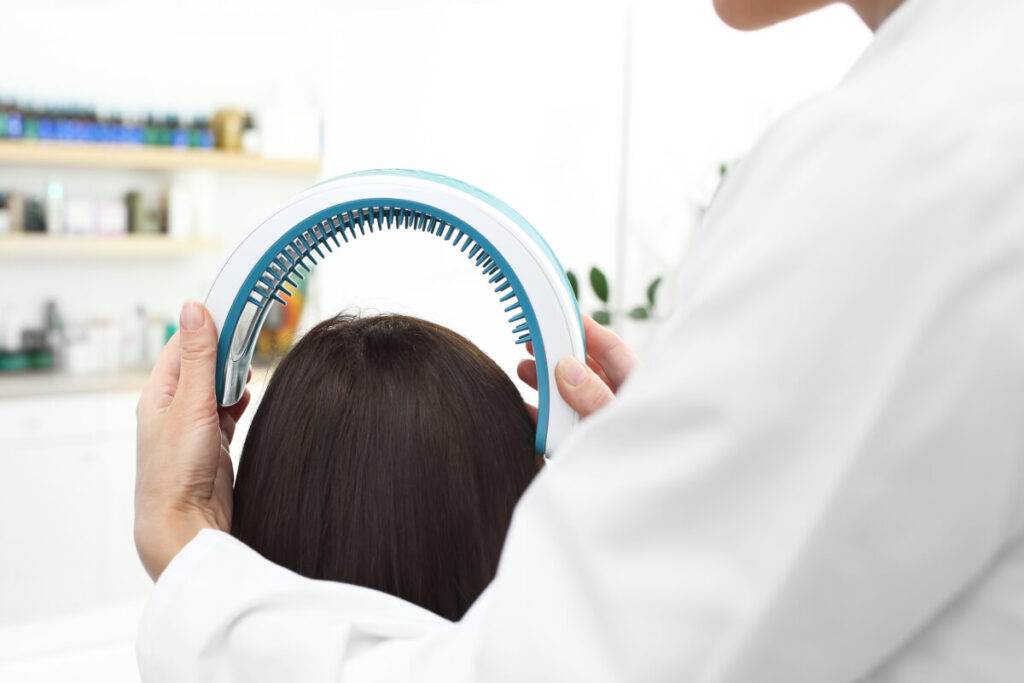
Other products or procedures may complement the effects of platelet-rich plasma in treatment to stimulate the stem cells of hair follicles for additional hair growth. This then helps achieve the desired effect of effective treatment of common hair loss disorders such as androgenetic alopecia and the management of other disorders. These include the following:
1) Drug Therapy
Dihydrotestosterone (DHT) was learned to have a role in androgenetic alopecia. Thus, drugs such as oral finasteride and dutasteride, which can block the pathways towards DHT, are implicated for use against hair loss caused by androgenetic alopecia.
Another pharmacological treatment commonly used against hair loss is topical minoxidil, which is utilized despite an unclear mechanism of action due to hirsutism being one of its side effects.
Yet other drugs that show promise in combating androgenetic alopecia are bimatoprost and latanoprost, which are prostaglandin analogs. The former is commonly used in growing eyelashes and eyebrow hair and is under investigation for use to improve hair thickness in the scalp while the latter has been used in a study also for the same purpose.
All of these drugs have their corresponding side effects and it is important for the clinician to weigh the benefits and risks of using these drug therapies. Moreover, it is also important to note that the primary usage of these products is different from intended use (i.e., the indication is a different disease entity and not primarily for androgenetic alopecia) so judicious use is really important.
2) Laser Therapy
Laser therapy has been implicated to bring the hair growth cycle toward the anagen phase and help hair stay for a longer time. Moreover, it was also shown to increase adenosine triphosphate (ATP, the energy currency of the cell) production, regulate the production of reactive oxygen species (highly reactive free radicals formed from oxygen), and influence the activation of transcription factors.
Clinical studies have shown its effectiveness in improving the appearance of hair in male and female patients with androgenetic alopecia, both as a monotherapy (using it alone) or as an adjunct therapy (using it in combination) with oral finasteride and topical minoxidil.
3) Microneedling
A comparison of microneedling with topical minoxidil against hair loss has shown microneedling as a better treatment option than topical minoxidil in terms of effectiveness since the total hair count of the patients that underwent the procedure is significantly better compared with those who only used topical minoxidil.
Moreover, the beneficial effects of combination therapy of microneedling and autologous platelet-rich plasma were ascertained in an open, prospective study in which both the patient’s and the physician’s assessment of hair growth showed clinical improvement at the end of 6 months.
4) Hyaluronic Acid
Hyaluronic acid can help with hair loss as its supplementation may potentially improve hair health by helping the scalp lock in moisture, promoting the appearance of smoother, less frizzy hair, and increasing active hair growth through better blood circulation into the blood vessels around hair follicles.
The beneficial effects of hyaluronic acid to human skin such as the proliferation of collagen fibers may also be expected to occur in the scalp, as it may be seen as the hair skin epidermis may also be seen as an extension of human skin in other parts of the body.
Coadjuvant therapy of hyaluronic acid and platelet-rich plasma also has found its use in the management of knee osteoarthritis, showing beneficial effects on the alleviation of body pain and other associated symptoms of osteoarthritis.
5) Corticosteroids
Hair loss due to inflammation such as in the case of alopecia areata may be solved by cortisone injections in the hair follicles which mitigate these inflammatory reactions to help grow back the hair that went into dormancy.
Coadjuvant therapy of corticosteroids and platelet-rich plasma has also been shown in clinical trial to be promising, as the anti-inflammatory effect of corticosteroids was complemented with the protective effects of PRP against the side effects of corticosteroids.
Other Uses Of Platelet-Rich Plasma
The clinical efficacy of platelet-rich plasma injection lies in its ability to stimulate cell proliferation for improved recovery of a wide variety of disorders. This is due to the platelet plasma growth factors such as platelet-derived growth factor, endothelial growth factor, and epidermal growth factor.
The improvement of progressive hair loss has been scientifically proven, as seen in the improvement of hair mass of the participants of the study discussed earlier. Hair thickness was also improved in the participants of other studies such as that by Gentile et al. (2015) regarding a randomized placebo-controlled trial.
This trial was done via a prospective cohort study where the results of the injection of PRP and a placebo (using a physiological solution) were compared. Other studies in the literature review of Cervantes, et al. (2018) also showed similar results, although additional studies are needed to determine the proper treatment protocol that will achieve the optimum effects.
Aside from these, platelet-rich plasma treatment was proven to be effective in a wide range of treatment modalities such as the use of platelet-rich plasma in dermatology and orthopedic care. Applications of platelet-rich plasma include the following:
1) Post-surgical Healing
Platelet-rich plasma injections are shown to contribute to effective wound healing. This is seen in the improved recovery time after surgery of patients who underwent surgery and got their PRP shots. For example, in a systematic review, the patients who underwent carpal tunnel syndrome (CTS) surgery and pilonidal sinus surgery all showed improvements in the pain they’re experiencing.
2) Sports injuries
Common sports injuries such as tendon injuries, cartilage injuries, and musculoskeletal injuries can be improved upon by the injection of platelet-rich plasma into the area of concern. Studies have shown that better healing seen through faster recovery time may be expected when using PRP injections on these common sports injuries compared to non-usage of PRP.
3) Osteoarthritis pain
Pain associated with osteoarthritis is also shown to be improved through the use of platelet-rich plasma injections, with a proposed standardized dose of 10 billion platelets in 8 mL.
4) Skin rejuvenation
Autologous platelet-rich plasma injection has been used for years to improve on wrinkled skin. Studies have elucidated the molecular mechanisms which bring the anti-aging effects of platelet-rich plasma injections, such as downregulation of factors contributing to photoaging such as MMP-1 and tyrosinase, and the subsequent upregulation of factors downregulated by UV-B such as fibrillin and tropoelastin.
It may also be used in conjunction with microneedling to further improve on and maximize the skin-tightening effect through the remodeling and proliferation of collagen fibers.
Achieve The Same Enhanced Effect With PEP
The same enhanced effect due to the hair-inductive activity of platelet-rich plasma injections combined with other treatment modalities such as that mentioned above and others like stem cell and platelet-rich fibrin can also be achieved through the use of PEP Factor, minus the adverse effect brought by the human skin trauma of platelet-rich plasma injection since PEP Factor is applied topically.
Similar to PRP, PEP Factor also has components that promote the natural healing process of the body, such as the fibroblast growth factor (bFGF) that effectively stimulates cell proliferation and copper peptide which has antioxidant properties.
Most importantly, note that PEP is hassle-free compared to PRP when taking into consideration their methods of preparation because PEP is ready-made, in contrast to PRP where you have to separate the blood components such as the plasma rich in platelets from others.
Shop Now At FACE Medical Supply For High-Quality And Effective PEP Factor Products
Dalteparin and protamine microparticles are proven to be an effective carrier on adult hair follicle growth that improves terminal hair density upon addition to PRP. Other products and procedures may also be used with PRP to achieve the same effect and it’s a matter of choosing the best among these treatment options.
At FACE Med Store, we are committed to providing only the best, effective, and up-to-date medical products including the in-demand PEP Factor as well as other treatments for female pattern hair loss and progressive hair loss. Call us now at (800) 770-9083 or browse through our site to look at our medical supplies and check out what’s suitable for the needs of your patients.

